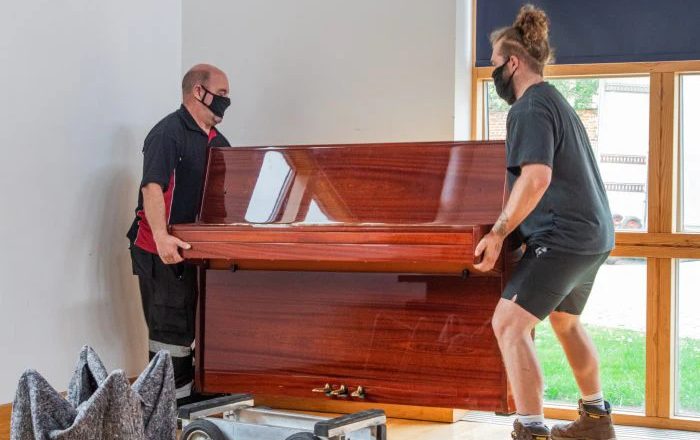Relocating a piano is among the most challenging aspects of any move, requiring careful planning, proper equipment, and precise execution. These valuable instruments are heavy and awkwardly shaped and contain delicate internal mechanisms that can be easily damaged if mishandled. Working with a trusted moving team can significantly reduce the risks associated with piano relocation, but following established procedures is essential for those handling the task themselves. This comprehensive guide walks through each stage of the piano moving process, from initial assessment to final placement, helping you protect your instrument and the people moving it during this complex operation.
Assessing the Piano and Surroundings
Before moving a piano, carefully evaluate it and the surrounding environment to ensure a smooth and safe transfer. Start by examining the piano’s dimensions, weight, and any fragile components that may require special handling. Measure doorways, hallways, and staircases to ensure the piano can pass through without issues. Evaluate the flooring for stability and ensure no obstacles are on the path. Check for tight corners or tricky spots that may pose challenges during the move. Moreover, consider where the piano will be placed in the new space to ensure it fits and can be easily maneuvered into position. You can better prepare for a successful piano relocation by thoroughly analyzing these factors.
Gathering the Necessary Equipment
Gather essential equipment such as furniture straps, moving blankets, a dolly, and protective gloves to ensure a smooth and secure piano moving process. Furniture straps are necessary for securing the piano while driving, preventing accidental slips. Moving blankets protect against scratches and bumps during transportation. A dolly is indispensable for maneuvering the heavy instrument efficiently, reducing the risk of strain or damage. Protective gloves offer a better grip and shield hands from potential injuries. Ensure the equipment is in good condition before starting the moving process. These tools will streamline the moving process and help safeguard both the piano and the movers.
Securing and Preparing the Piano
Protect the piano by ensuring the lid is closed and locked, and any loose parts are secured or removed. Begin by closing and locking the piano lid to prevent it from opening during the move. If the piano has any removable parts, such as pedals, lyres, or legs, secure them properly. Remove any music sheets or other loose items from the music rack. Next, use moving blankets or padding to cover the entire piano, securing them with tape or straps to protect the surface from scratches or damage. Moreover, consider wrapping the piano legs with protective material to prevent bumps or dings during the move. By taking these steps, you will help ensure that your piano remains safe and secure during transportation.
Enlisting Help and Planning the Route
Consider enlisting the assistance of experienced movers or friends to help with the safe transportation of the piano, ensuring a smoother and more efficient moving process. Before the actual move, plan the route meticulously. Take note of any obstacles such as stairs, narrow hallways, or sharp turns that may present challenges during the move. Measure doorways and passages to make sure the piano can pass through smoothly. Clear the path by removing any obstacles like furniture or rugs that could block the way. Communicate the route plan clearly with your helpers to ensure everyone is on the same page. By enlisting help and planning the route carefully, you can reduce risks and ensure a successful piano moving experience.
Executing the Move With Care
Carefully position yourself and your helpers around the piano, ensuring a firm grip before lifting it off the ground. Assign specific roles to each person to maintain control and coordination during the move. Communicate clearly with your team, establishing signals for when to lift, lower, or adjust the piano’s position. Lift with your legs, not your back, to avoid injury. Move slowly and steadily, keeping the piano level to prevent internal damage. Watch out for doorways, corners, and obstacles that may require adjustments in your path. Take breaks if needed, but ensure a smooth handover between handlers to maintain a consistent pace. Finally, gently set the piano down, ensuring all helpers are clear before releasing the weight.
Other Related Articles:

